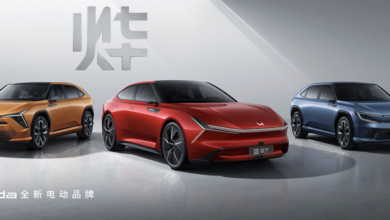China’s EV price war spreads overseas as carmakers chase market share, higher profit margins

“This is not a good sign for Chinese automotive companies as we accelerate our pace of going global.”
China is the world’s largest automotive and EV market, with nearly four out of every 10 new cars taking to the streets powered by batteries.
But the domestic industry, crowded with more than 100 companies, is now mired in overcapacity woes following the collapse of several underachieving players like WM Motor and Human Horizons.
“But when Chinese carmakers land in those markets in droves, price competition becomes inevitable, which eventually hurts their own interests.”
Hozon’s Neta V pure-electric car now sports a price tag of 549,000 baht, 30 per cent cheaper than BYD’s Dolphin electric sedan, while Changan’s Lumin EV is priced at 480,000 baht.
Their low-price strategies worked in recent years, as Chinese EV makers now enjoy the lion’s share of the market in Southeast Asia. Their slice of the pie grew from 47 per cent in 2021 to 74 per cent last year, according to data compiled by Deloitte China.
The consultancy said BYD had a 33 per cent share of the EV market in the Association of Southeast Asian Nations (Asean) countries, trailed by Neta-branded electric cars whose sales accounted for 14 per cent of the regional total.
Last year, Japanese carmakers had a 64 per cent share of the automotive market in Asean countries, but the surging penetration of electric cars in the region will give Chinese EV companies a big opportunity to challenge market leaders like Toyota, according to industry officials.
In 2023, EV sales represented just 3 per cent of total car sales in the region, but Deloitte predicted the rate of electric car adoption could soar to 10 per cent of a market in which vehicle deliveries topped 3.3 million last year.
“Price wars are not unusual in both developed and developing markets,” said David Zhang, director of the WDEF Digital Automotive International Cooperation Research Centre in Hangzhou.
“But Chinese EV makers need to reach consensus that constant price reductions will turn out to be detrimental to all of them because lower prices will lead to heavy losses.”
To date, the Chinese EV builders are still reporting a strong per-vehicle margin – the gap between the selling price and tangible costs such as raw materials, labour and logistics – in the Asean market, according to Jetour’s Chen.
BYD’s Atto3, known as Yuan Plus on the mainland, starts at 119,800 yuan (US$16,542) in the domestic market, a third cheaper than the price paid by Thai consumers.
Early this month, the White House announced a quadrupling of tariffs on Chinese-made EVs as part of an array of measures it said would protect US companies from unfair subsidies doled out by Beijing to its companies.
Chinese EV assemblers are already bracing themselves for another blow in Europe, after the European Commission started a probe last September into Beijing’s subsidies for carmakers.
BYD, which counts Warren Buffett’s Berkshire Hathaway among its shareholders, fired the first salvo in an EV price war on the mainland, slashing the prices of nearly all of its cars by 5 to 20 per cent since mid-February.
Since then, the prices of 50 models across a range of brands have dropped by 10 per cent on average, Goldman Sachs said in a report last month.
Another cut of 10,300 yuan per vehicle by BYD, or 7 per cent of the company’s average selling price, could drive the nation’s EV industry into losses, the US bank added.



